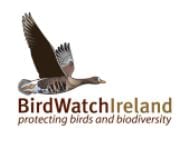The Dublin Port tern colony is dispersing quickly, as the breeding season winds down. On our last visit, fledglings were taking to the wing from several platforms. So, we thought it time to bring you news of how the colony fared this season.
It all kicked off at the beginning of July with over 500 nests counted across the colony, meaning that more than 500 pairs of terns bred in Dublin Port this season.
 Common Terns dreading or flying up from the platforms as we approached. (Brian Burke)
Common Terns dreading or flying up from the platforms as we approached. (Brian Burke)
 Counting nests. How many nests can you spot? (Brian Burke)
Counting nests. How many nests can you spot? (Brian Burke)
The word nest usually brings to mind a woven structure, nestled within the boughs of a tree or a hedge. However, terns subvert our notion of the norm. Instead, they opt for a shallow hole in the ground into which the eggs are laid.
Some of the nests are decorated…
 ‘Decorated’ Common Tern nest. (Brian Burke)
‘Decorated’ Common Tern nest. (Brian Burke)
And some are not…
 ‘Undecorated’ Common Tern nest. (Brian Burke)
‘Undecorated’ Common Tern nest. (Brian Burke)
The reasons for this are still not understood.
When counting the number of nests during the census, the number of eggs in each clutch is also recorded. Typically, a Common Tern nest will contain between 2 and 3 eggs. However, some Common Terns were obviously feeling optimistic this season, with several four egg clutches counted.
 Common Tern nest with four eggs. The top right egg is hatching. (Brian Burke)
Common Tern nest with four eggs. The top right egg is hatching. (Brian Burke)
An essential part of our work in the Dublin Port colony is ringing terns under licence from the National Parks and Wildlife Services. This year, in addition to ringing chicks, we also caught and ringed several adult terns. Two of the birds caught had already been ringed as chicks, one in the port in 2015, the other on Rockabill back in 2011.
 Ringing adult Common Terns nesting in Dublin Port (Helen Boland)
Ringing adult Common Terns nesting in Dublin Port (Helen Boland)
Once the eggs began to hatch, we turned our attention away from ringing adult terns, and towards the task of ringing hundreds of chicks.
 Tern chick ringing. (Helen Boland)
Tern chick ringing. (Helen Boland)
Ringing has so many benefits for avian conservation from understanding migratory routes to quantifying survival rates. In Dublin Port, among other things, ringing the chicks allows us to estimate the ‘productivity of the colony’, i.e., how many chicks make it from the cute and fluffy stage below…
 Common Tern chicks and hatching egg. (Brian Burke)
Common Tern chicks and hatching egg. (Brian Burke)
…to become the elegant birds which fledge or fly from the colony a few weeks later.
 Dublin Port Common Tern fledgling photographed in Spain a few weeks after fledging! (Carmela Quijano)
Dublin Port Common Tern fledgling photographed in Spain a few weeks after fledging! (Carmela Quijano)
This information helps us understand how well the colony is doing year on year. Final figures are still under analysis for 2021. However, we do know that the fortunes of the tern colony in Dublin Port varied across the four breeding platforms this season.
Two of the platforms did quite well this year. In fact, one, the Tolka pontoon, had one of its most successful seasons since it was put out to sea in 2015! This was despite a bumpy beginning…
 Tolka Pontoon before it was fixed. (Brian Burke)
Tolka Pontoon before it was fixed. (Brian Burke)
Jimmy Murray and co., our able boatmen, did some quick troubleshooting, and the Tolka Pontoon was good as new by our new visit. The terns, which were already breeding on the raft, were seemingly unfazed by all the hullabaloo.
 And afterwards. (Brian Burke)
And afterwards. (Brian Burke)
Predation was a problem for terns breeding on the other two structures this year. Unfortunately, after years of flying under the radar, rats finally found the breeding platform which lies just 125m off the Great South Wall, predating chicks and even an adult tern.
 Great South Wall Pontoon. (Brian Burke)
Great South Wall Pontoon. (Brian Burke)
Jimmy Murray & co. acted quickly to prevent rats accessing the platform. This appears to have worked, as we had the privilege of watching chicks take flight from the GSW pontoon this season. In any year this is a cause for celebration, but particularly when dealing with mammalian predation, which can devastate a seabird colony.
 Common Tern fledgling. (Kevin Maguire)
Common Tern fledgling. (Kevin Maguire)
Arctic Terns are currently found on one structure in Dublin Bay, the CDL Dolphin, nesting among Common Terns. For the last number of years, terns on the CDL have been periodically hammered by predation. And for the last number of years, we’ve been scratching our heads, trying to figure out what exactly is going on. This year, our trail camera caught our ‘perp’, and it was not what we expected…
 Otter caught on trail camera on the CDL structure.
Otter caught on trail camera on the CDL structure.
Otter!!
Now that we know what we’re dealing with, this will hopefully make it easier to safeguard the terns on this platform. This is particularly important as this is the only platform in Dublin Port on which Arctic Terns breed. Their population has been steadily declining in the port over the last few years, thought to be in large part due to predation. Arctic Terns are similarly in decline at most colonies along the Irish eastern and south-eastern seaboard, making it all the more vital to protect those breeding in Dublin Port.
 Arctic Tern. (Brian Burke)
Arctic Tern. (Brian Burke)
This season, we also had a few welcome visitors to the colony. Oddboy Media, joined us during a ringing visit, to film the colony in action.
 Oddboy Media crew filming the Dublin Port Tern Colony. (Helen Boland)
Oddboy Media crew filming the Dublin Port Tern Colony. (Helen Boland)
This is part of a documentary series for TG4 about Dublin Bay, celebrating both its culture and wildlife. The documentary will also showcase the post-breeding flocks of terns that gather on the shores of Dublin Bay, before beginning their epic migrations to Africa (Common Terns) and Antarctica (Arctic Terns).
So, if you’d like to find out more about the tern colony and the myriad of things which make Dublin Bay so special, keep an eye out for this documentary which will air on TG4, later in the year.
Many thanks to Dublin Port Company for supporting and funding this work!

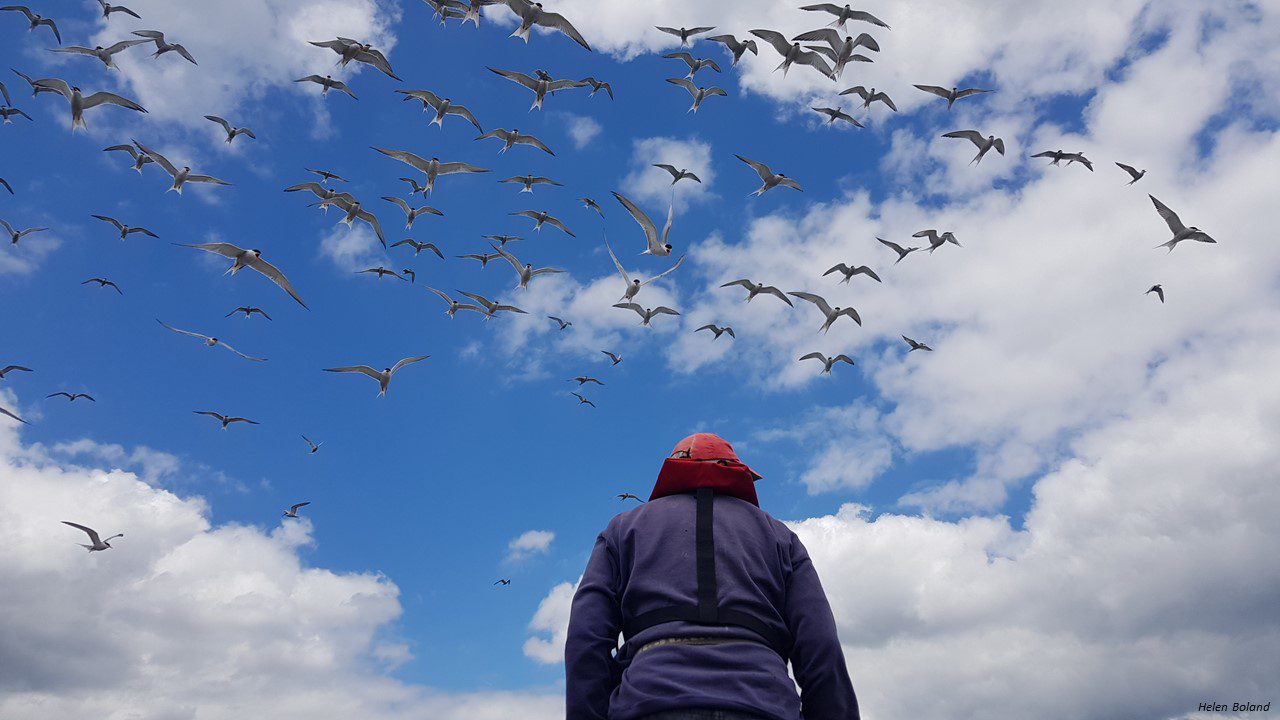
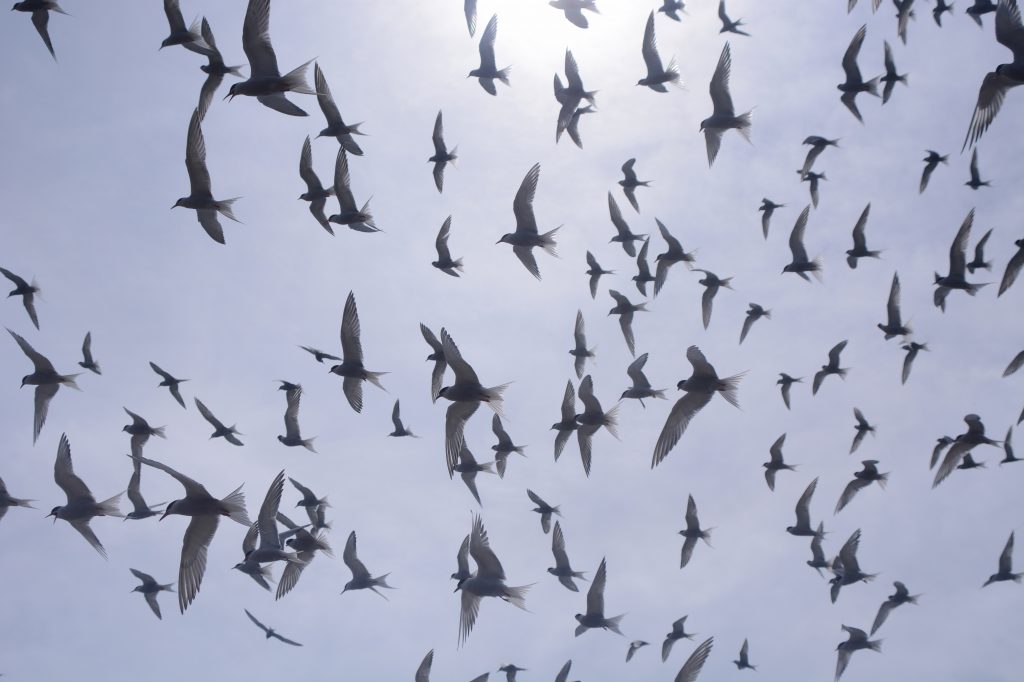 Common Terns dreading or flying up from the platforms as we approached. (Brian Burke)
Common Terns dreading or flying up from the platforms as we approached. (Brian Burke)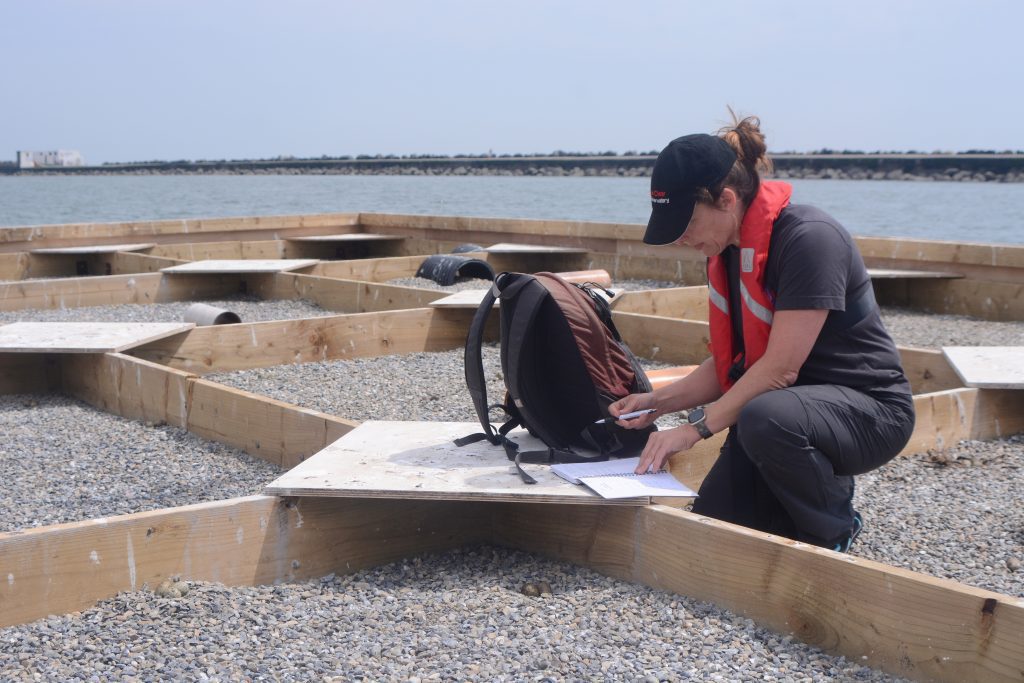 Counting nests. How many nests can you spot? (Brian Burke)
Counting nests. How many nests can you spot? (Brian Burke)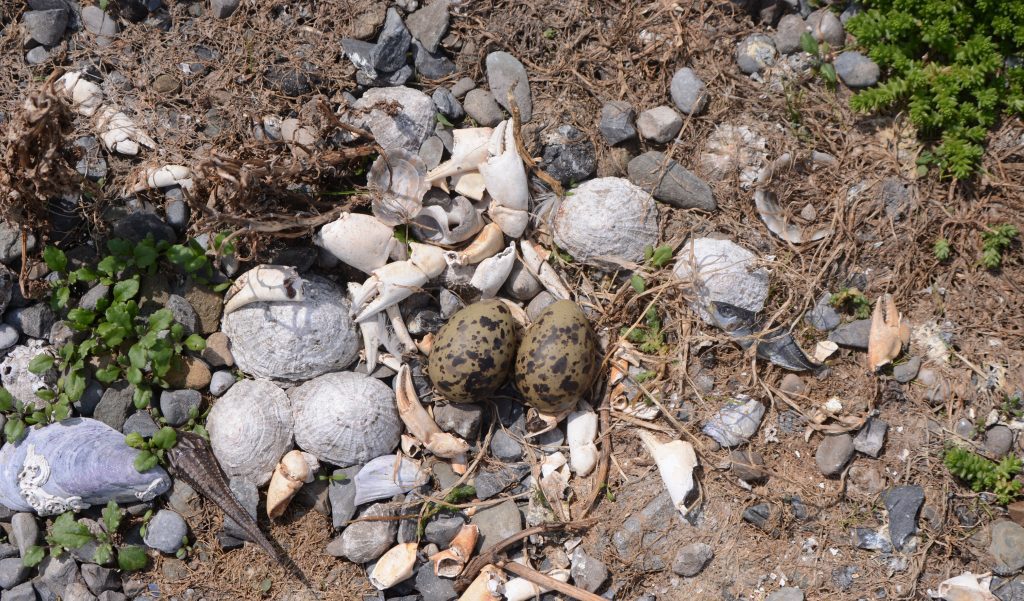 ‘Decorated’ Common Tern nest. (Brian Burke)
‘Decorated’ Common Tern nest. (Brian Burke)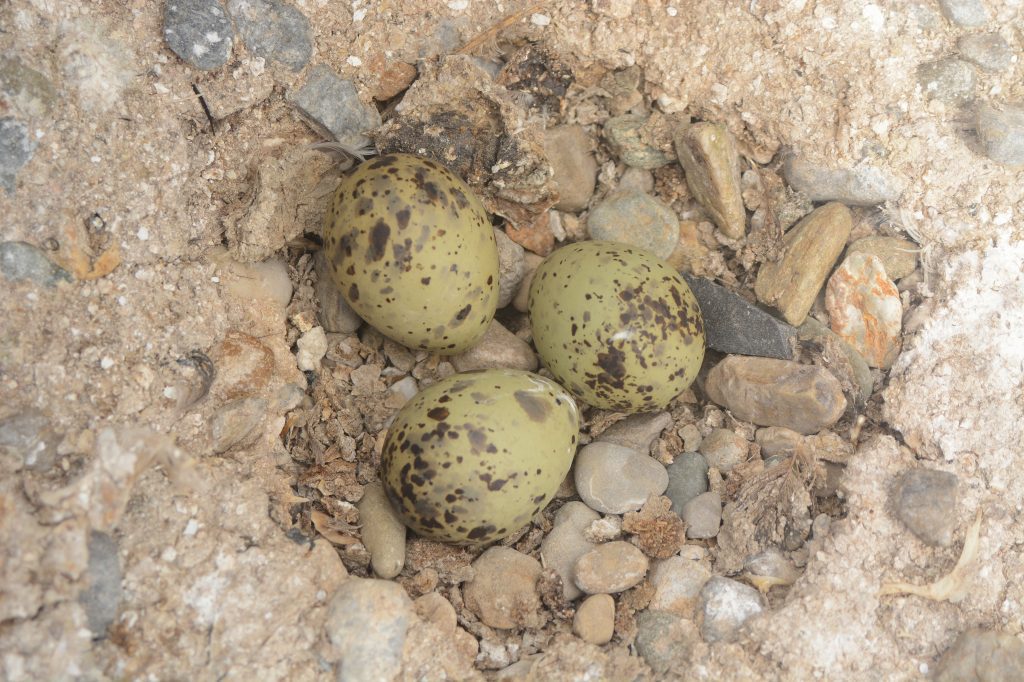 ‘Undecorated’ Common Tern nest. (Brian Burke)
‘Undecorated’ Common Tern nest. (Brian Burke)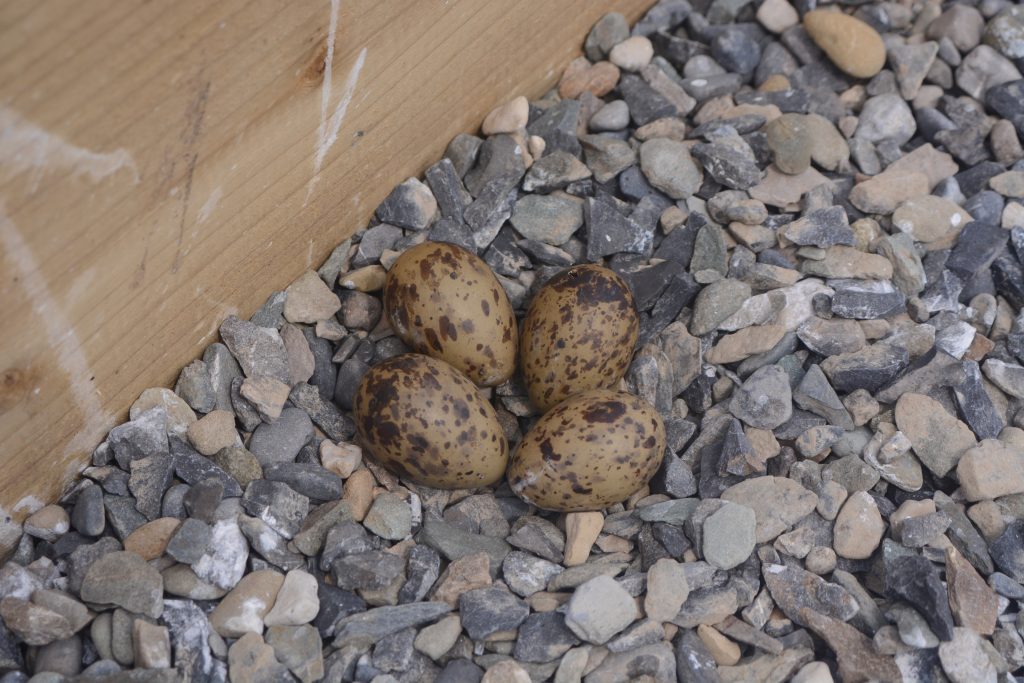 Common Tern nest with four eggs. The top right egg is hatching. (Brian Burke)
Common Tern nest with four eggs. The top right egg is hatching. (Brian Burke)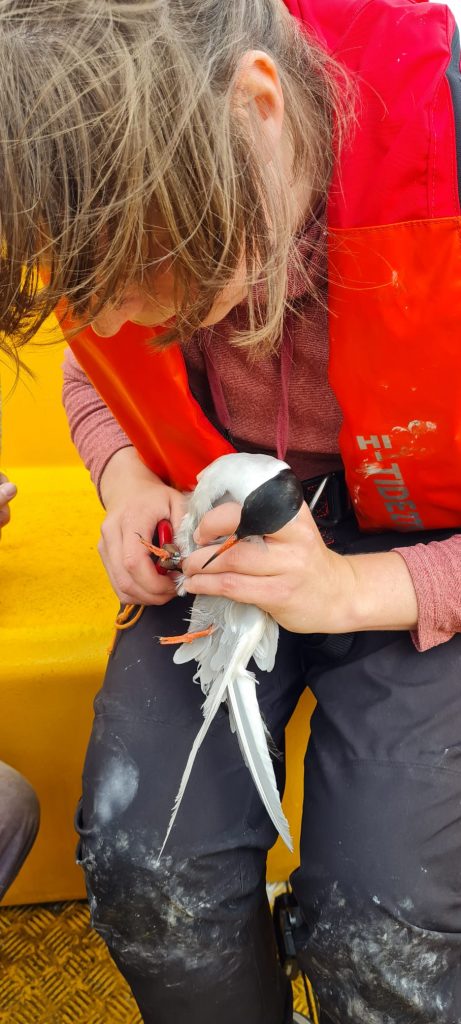 Ringing adult Common Terns nesting in Dublin Port (Helen Boland)
Ringing adult Common Terns nesting in Dublin Port (Helen Boland)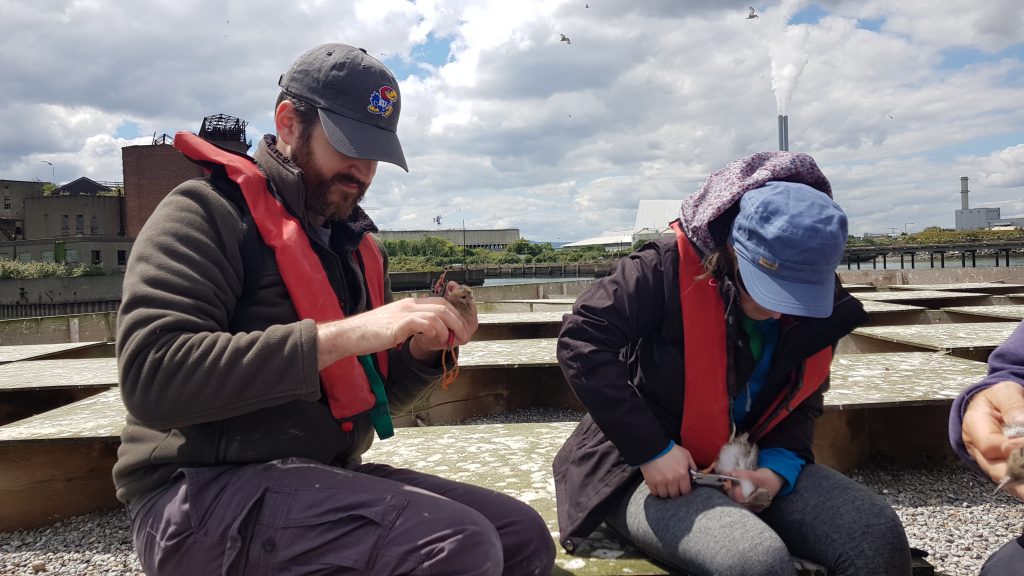 Tern chick ringing. (Helen Boland)
Tern chick ringing. (Helen Boland)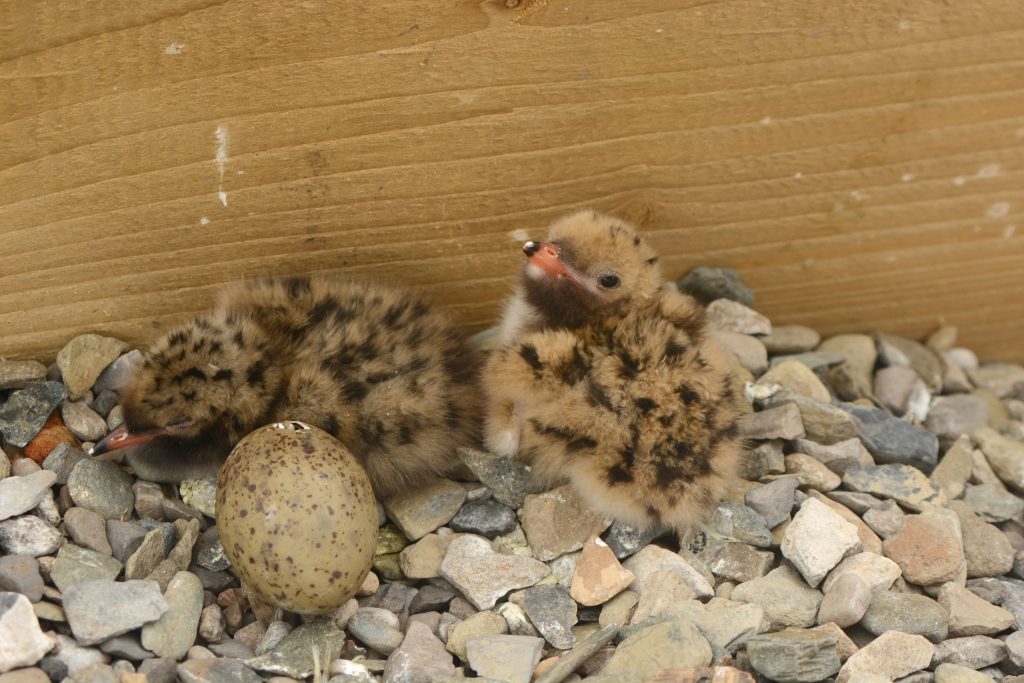 Common Tern chicks and hatching egg. (Brian Burke)
Common Tern chicks and hatching egg. (Brian Burke)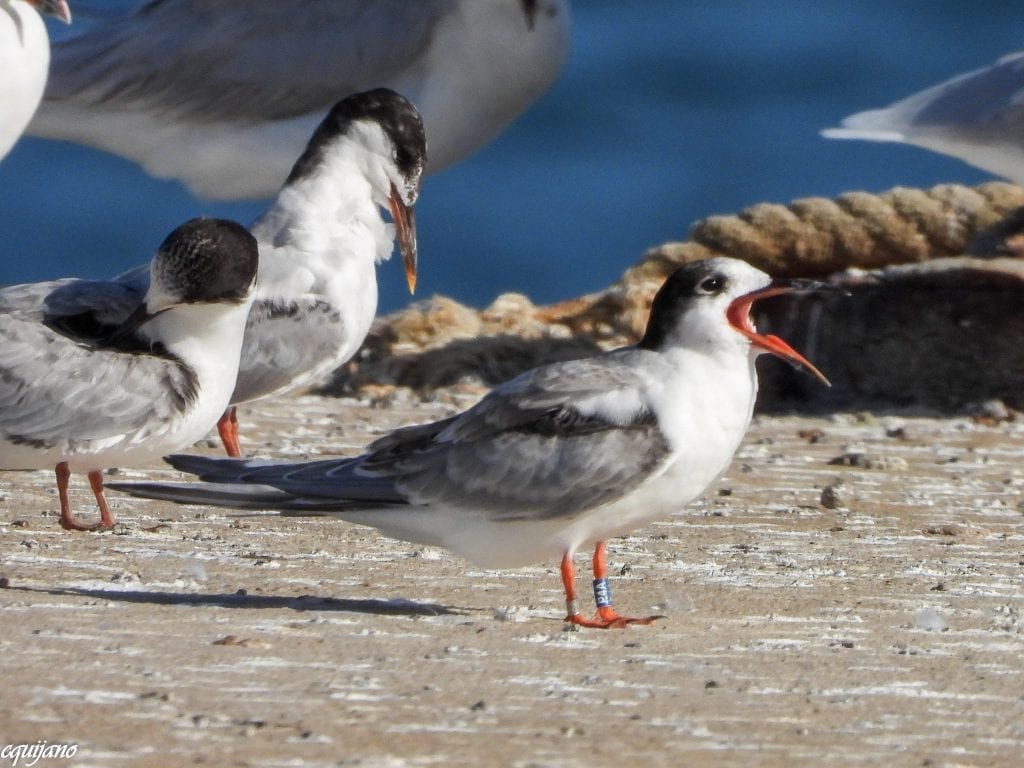 Dublin Port Common Tern fledgling photographed in Spain a few weeks after fledging! (Carmela Quijano)
Dublin Port Common Tern fledgling photographed in Spain a few weeks after fledging! (Carmela Quijano)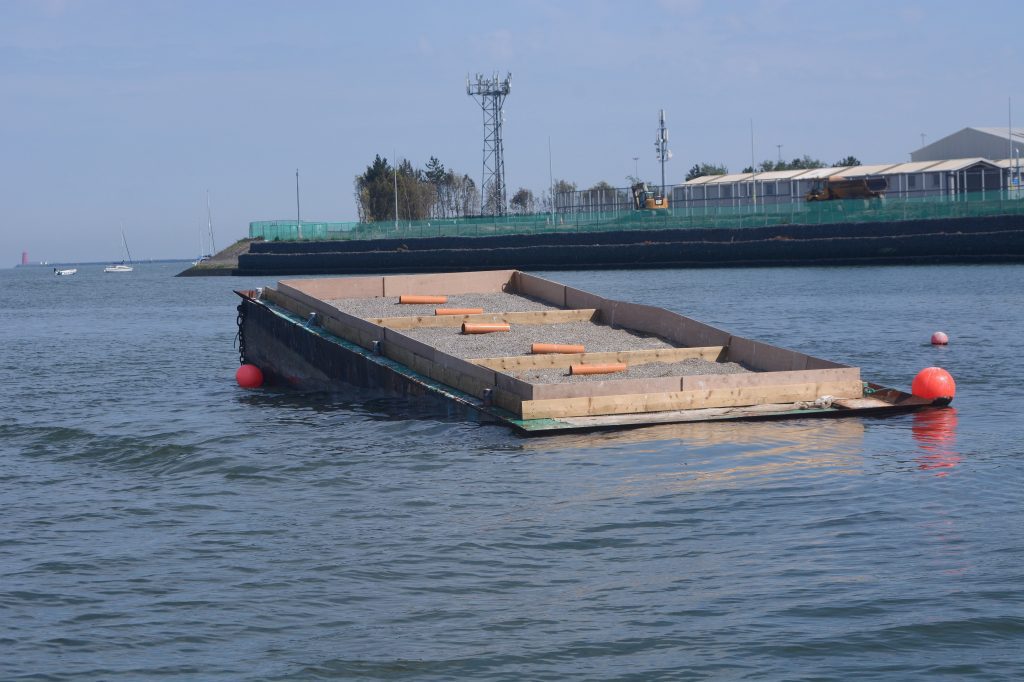 Tolka Pontoon before it was fixed. (Brian Burke)
Tolka Pontoon before it was fixed. (Brian Burke)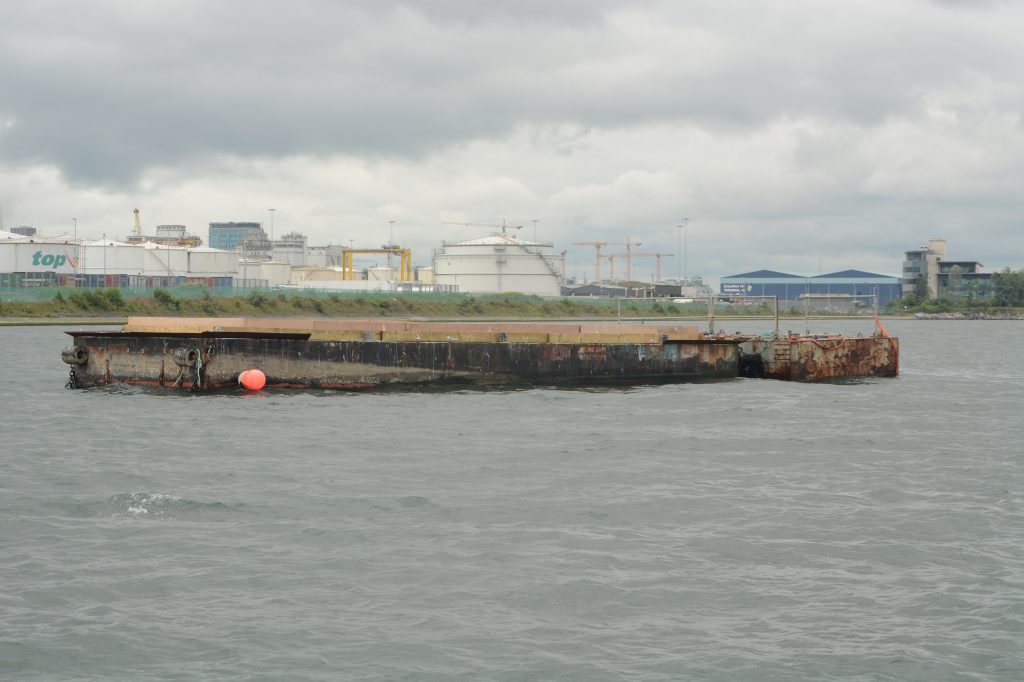 And afterwards. (Brian Burke)
And afterwards. (Brian Burke)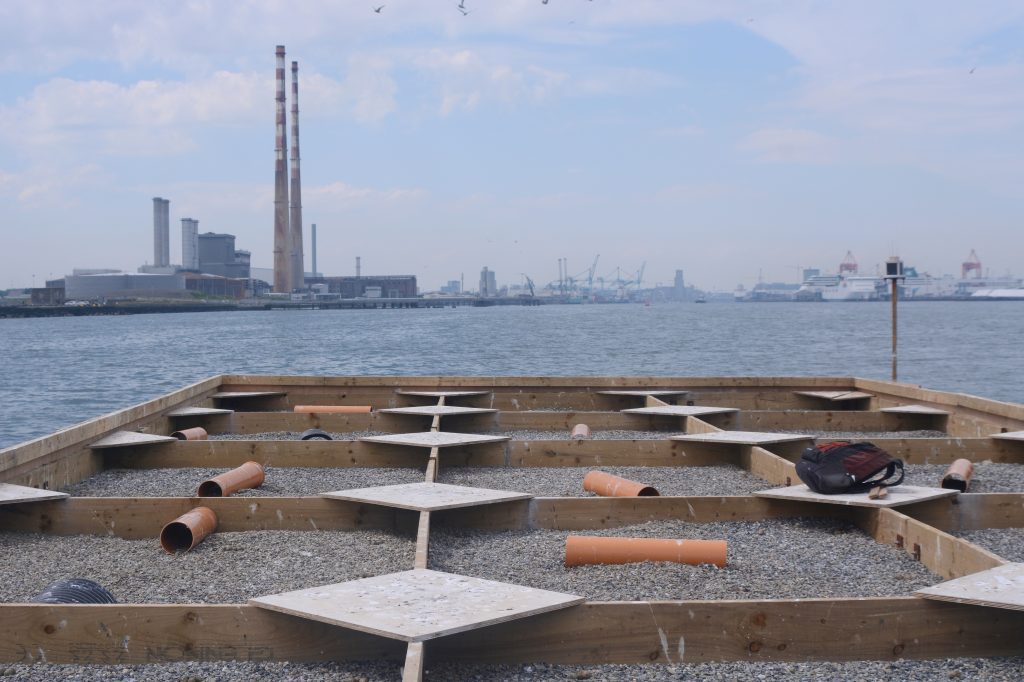 Great South Wall Pontoon. (Brian Burke)
Great South Wall Pontoon. (Brian Burke)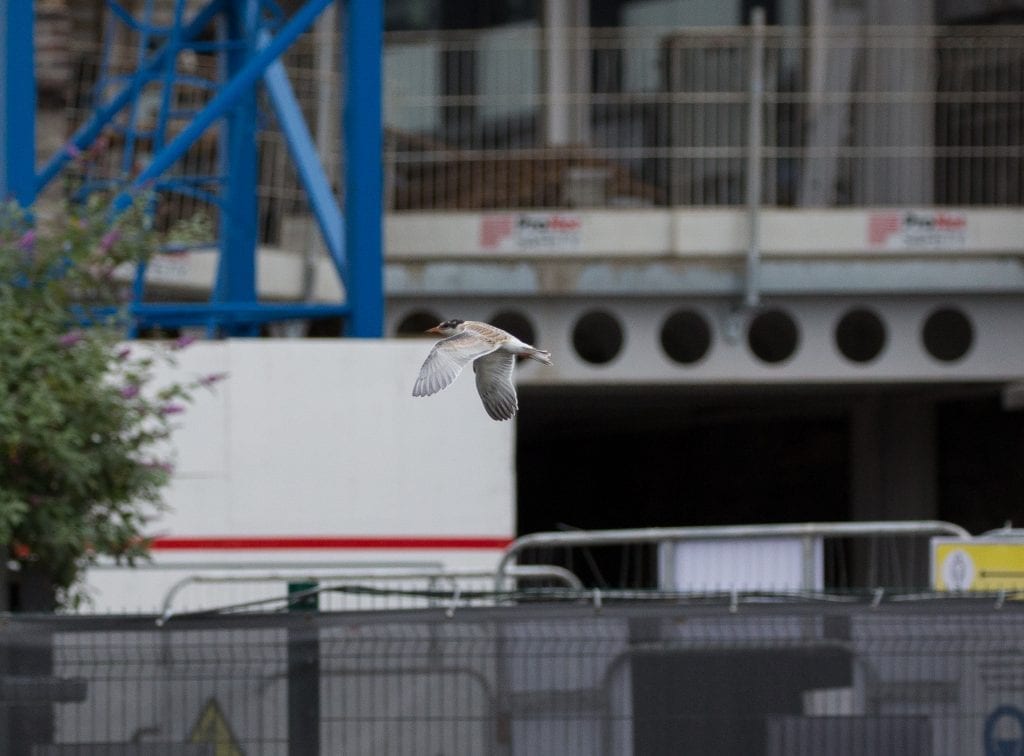 Common Tern fledgling. (Kevin Maguire)
Common Tern fledgling. (Kevin Maguire)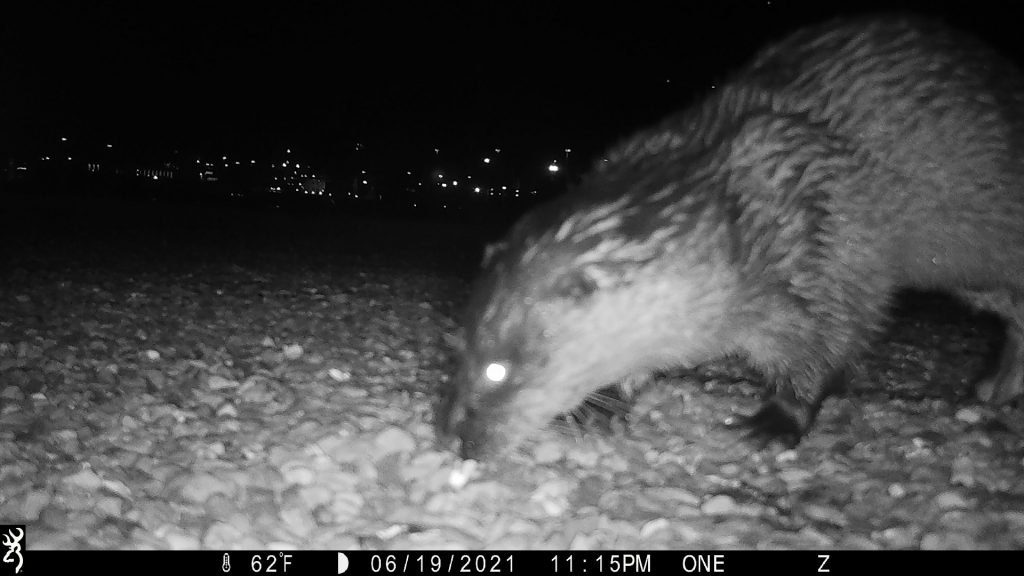 Otter caught on trail camera on the CDL structure.
Otter caught on trail camera on the CDL structure.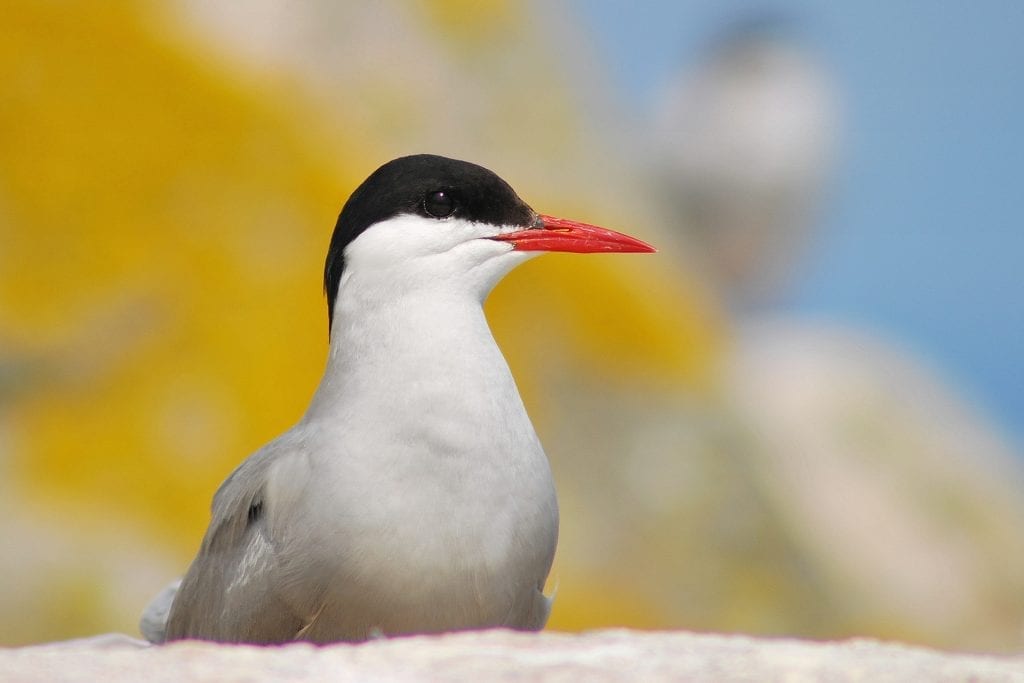 Arctic Tern. (Brian Burke)
Arctic Tern. (Brian Burke)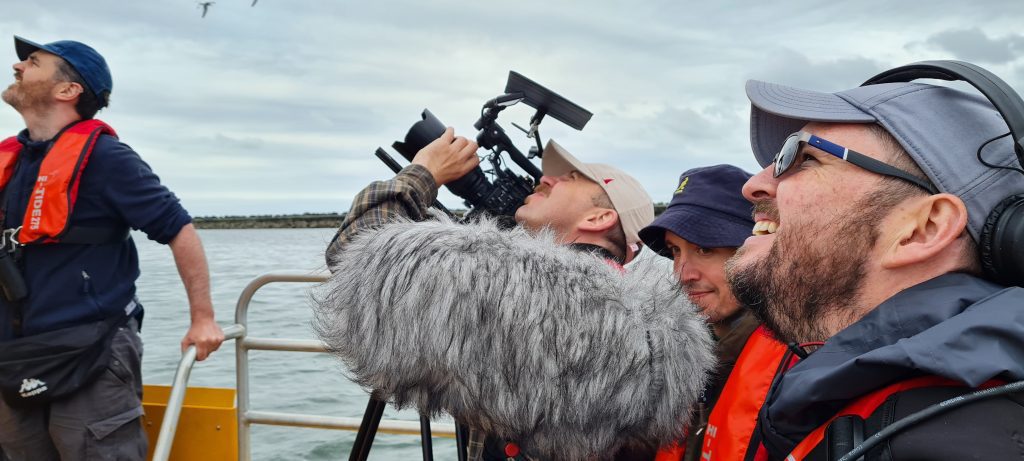 Oddboy Media crew filming the Dublin Port Tern Colony. (Helen Boland)
Oddboy Media crew filming the Dublin Port Tern Colony. (Helen Boland)